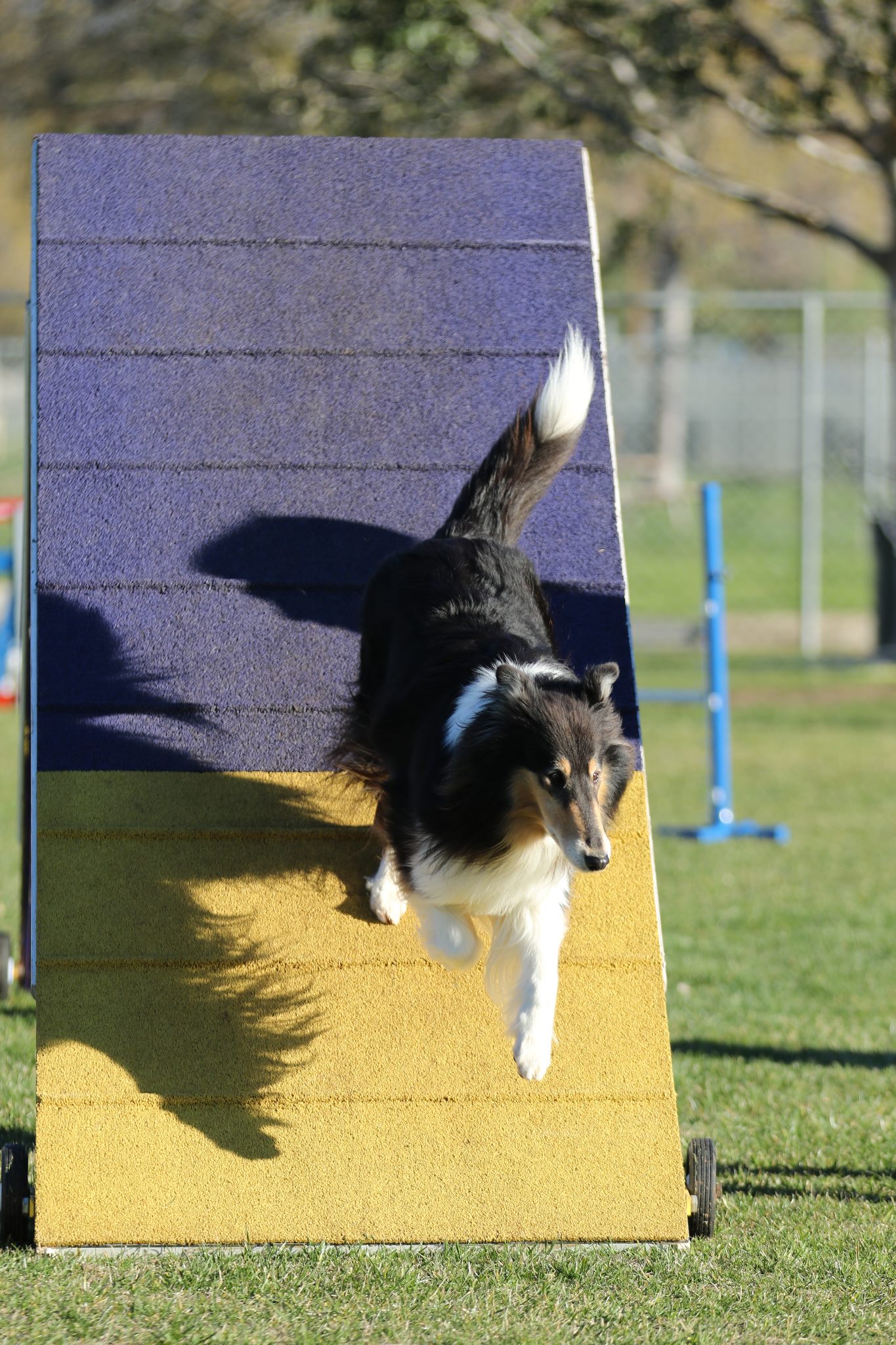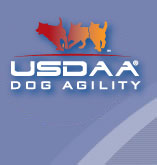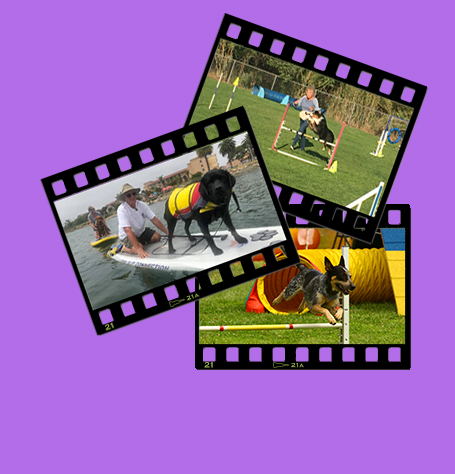Agility FAQs
Below are answers to some questions that newcomers to agility frequently ask:
What is dog agility?
Dog agility is a sport in which handlers direct their dogs over a timed obstacle course, with scoring based on faults and time as in horse show jumping events. No leash or other physical contact to direct the dog is allowed.
What obstacles are used?
Agility obstacles can be classified as jumps, tunnels, contact obstacles, and miscellaneous obstacles. The following equipment is commonly used in AKC, CPE, USDAA, and NADAC trials:
Jumps:
Non-winged jump
Winged jump
Tire jump
Broad jump
Tunnels
Contact obstacles:
A-frame
Dog walk
Teeter-totter
Miscellaneous obstacles:
Pause table
Weave poles
Jumps:
Non-winged jump
Winged jump
Tire jump
Broad jump
Tunnels
Contact obstacles:
A-frame
Dog walk
Teeter-totter
Miscellaneous obstacles:
Pause table
Weave poles
Why do agility with my dog?
Agility has many benefits for both dog and owner: it builds a strong dog-owner bond, provides intellectual stimulation and an energy outlet for the dog, and helps both dog and owner keep in good physical condition. Agility can also help build confidence in a fearful dog.
Do I have to be an athlete to do agility with my dog?
No, but physical fitness is helpful and one of the bonuses of doing agility.
What kinds of dogs can participate?
Any dog in good physical condition, regardless of pedigree. If you have a mixed breed (or All-American, as mixed breeds are often called in agility circles) and are interested in competing, AKC, CPE, NADAC and USDAA trials are common in the Southern California area and allow All-Americans.
Can I train my puppy to do agility?
Puppies’ growing structures are vulnerable to injury, so be careful when training your puppy. Puppies can learn to do tunnels and down-sized versions of the dog walk and teeter. In addition, there are many obedience and teamwork exercises you can do away from the obstacles that will lay the groundwork for a successful agility career. Weave poles and full-height jumping should be delayed until your puppy has reached physical maturity.
Can an older dog learn to do agility?
Many dogs continue to do agility, for fun or competition, well into their senior years. If your vet has verified that your dog is physically sound, there’s no reason why your dog shouldn’t learn agility. If you’re interested in competing with your older dog, some organizations have special classes that allow your dog to jump at a lower height, and/or extra time to finish the course.
How often do I have to train my dog?
Your dog doesn’t need to be drilled for hours a day; in fact, this type of endless training is often counter-productive. Training sessions should be kept short and fun for the dog. Many successful competitors practice on contact equipment only once or twice a week in a formal class setting; they may practice directional control, jumping, and weave poles on their own outside of class.
How can I learn more about agility?
Check out the links to agility organization pages below. Here you’ll find out how to register you and your dog for the different organizations, the rules they follow, and other general information.
Where can I see agility firsthand?
See our Events page for a list of our upcoming trials and fun matches. Spectators are always welcome at these events.











